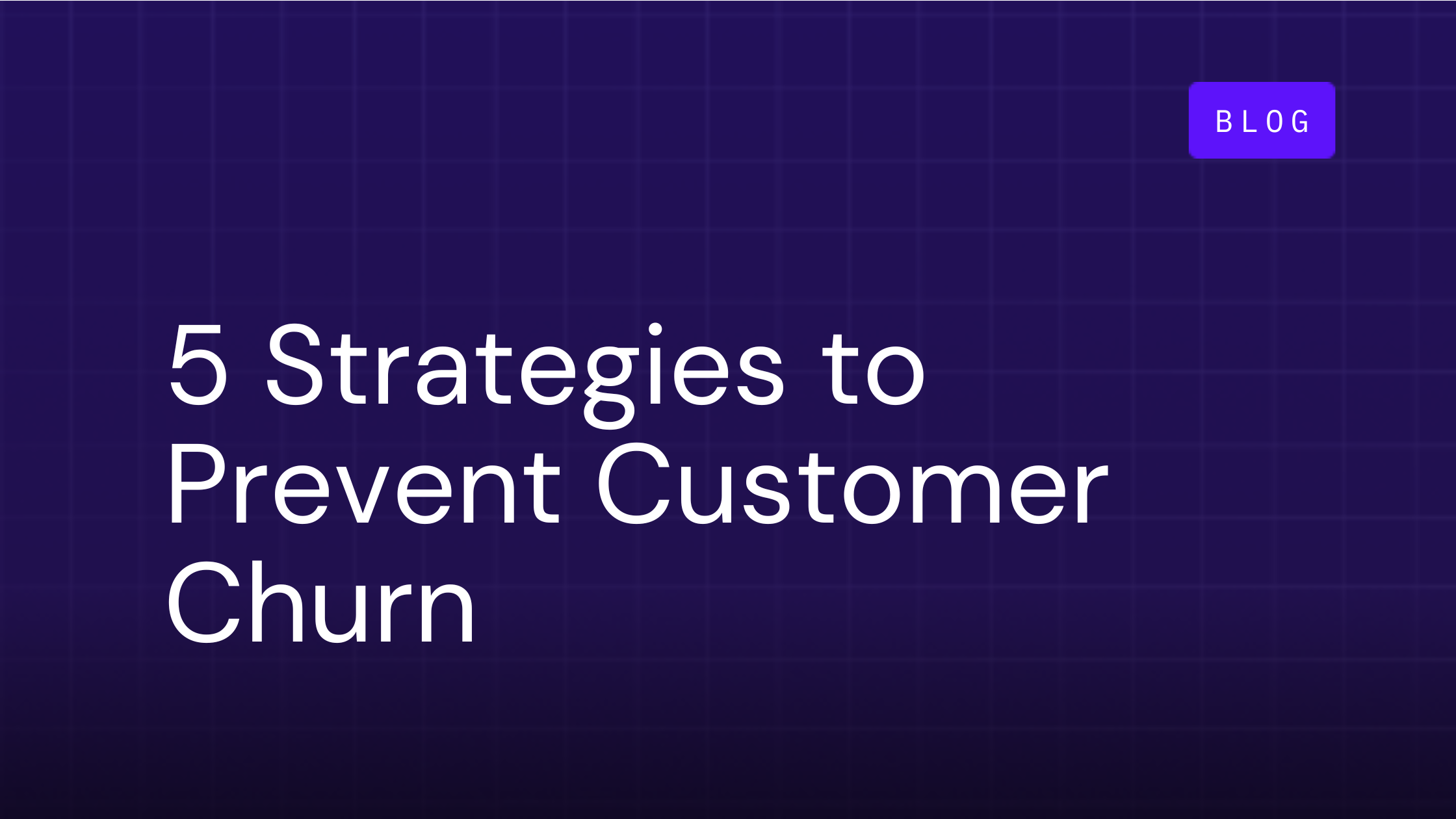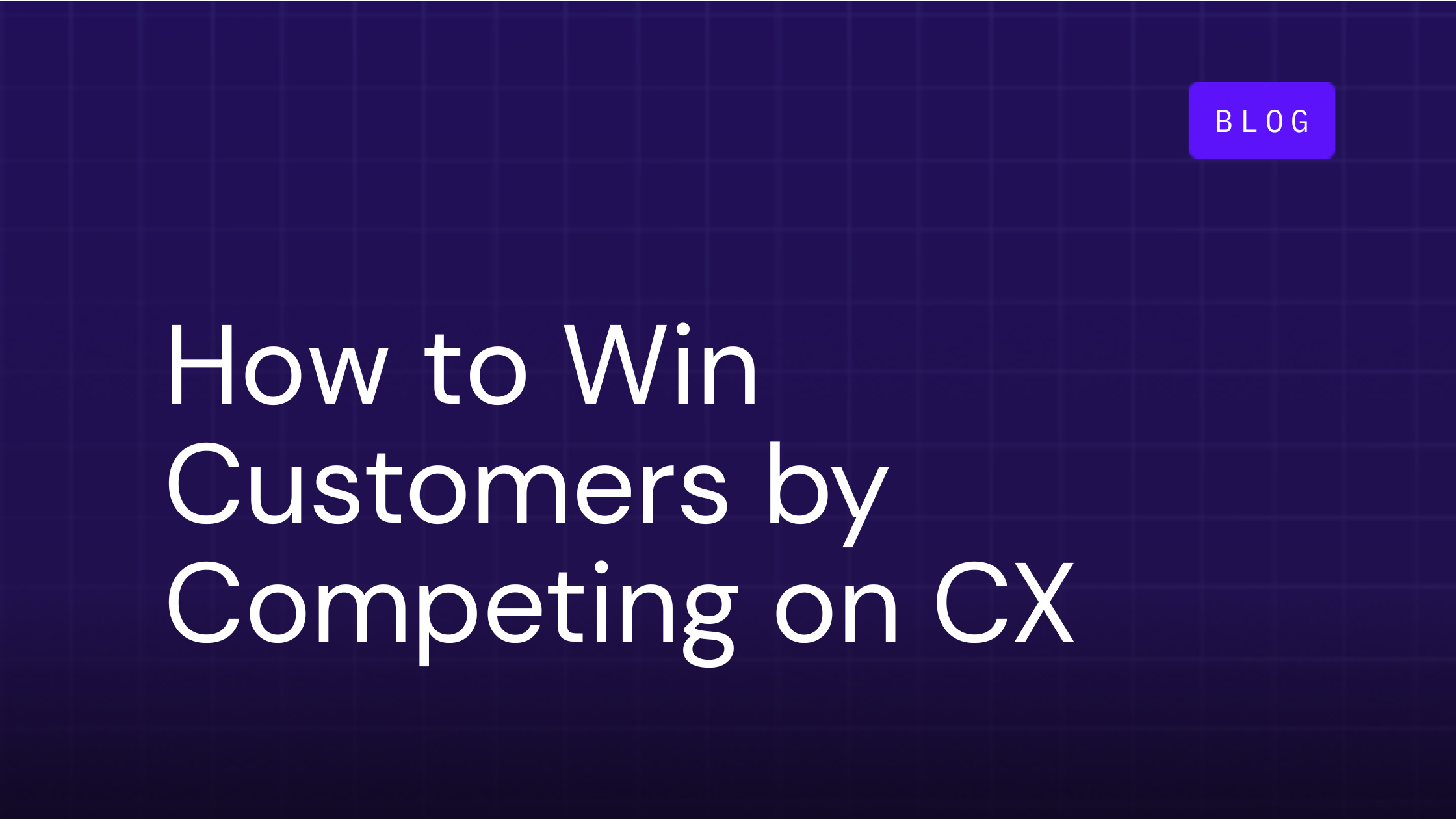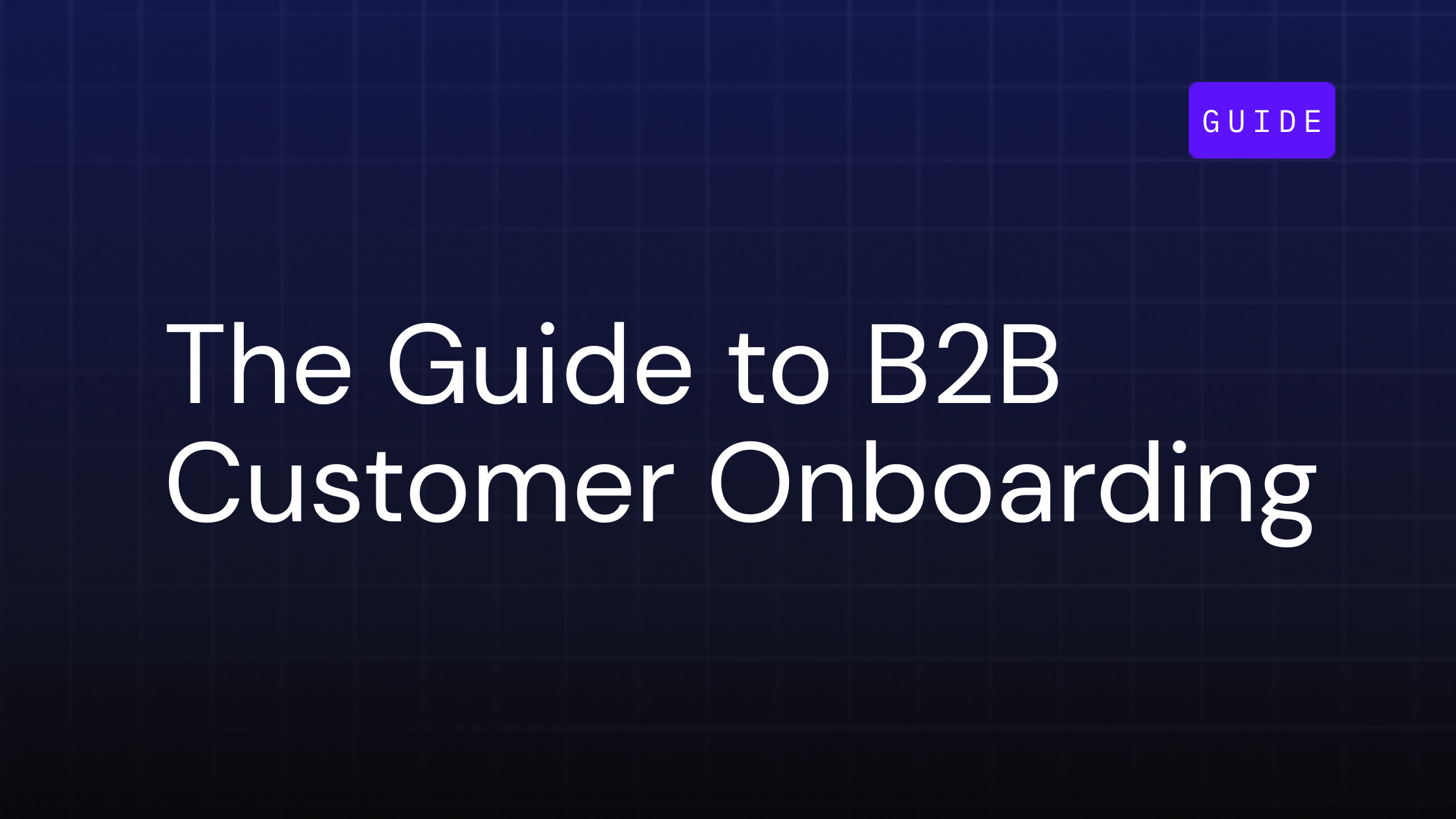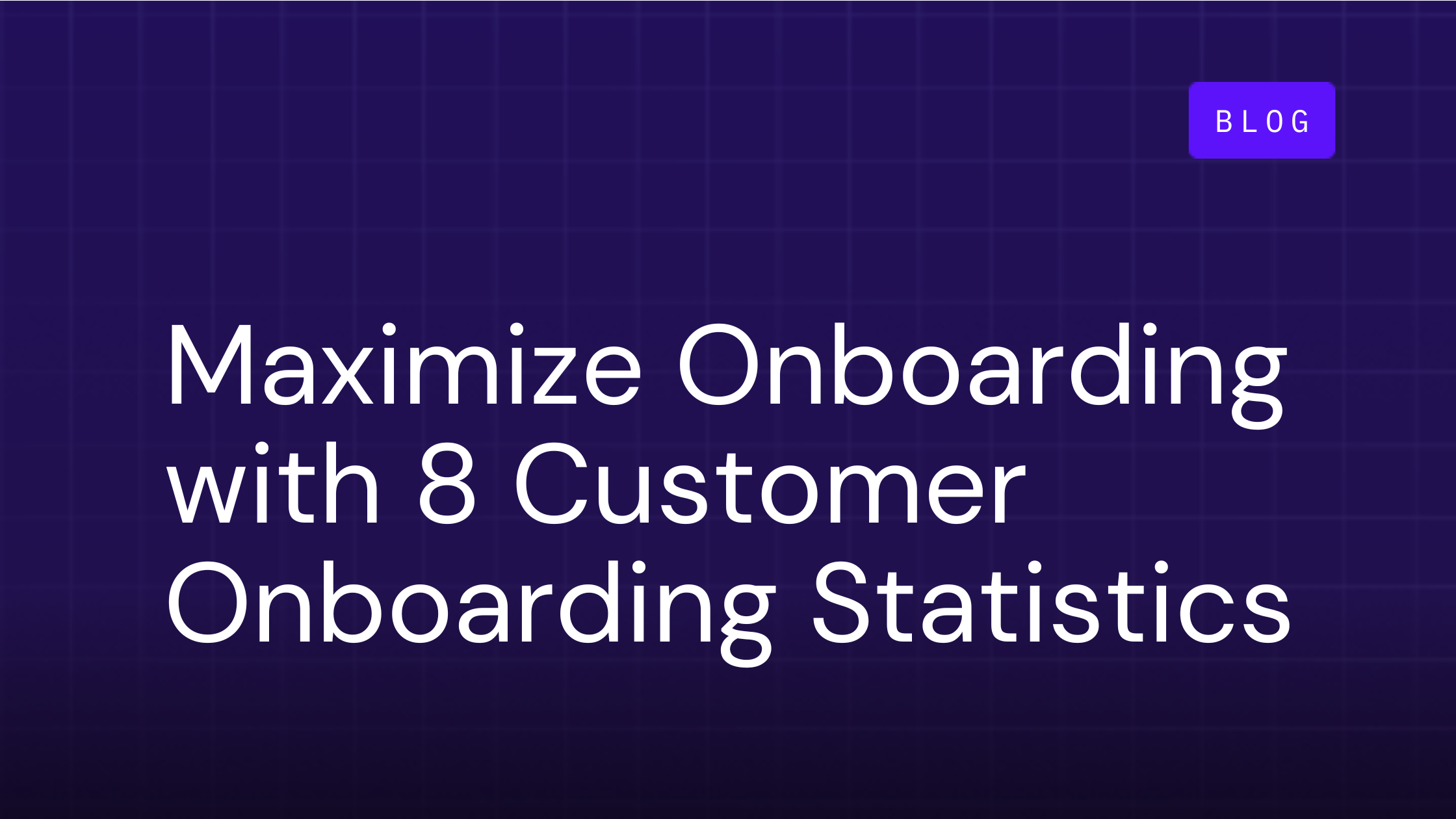Churn Prevention: 5 Strategies to Prevent Customer Churn

Table of Contents
Your sales and marketing team has a full-blown system for generating leads and acquiring new customers. They are crushing their goals and new customers are being onboarded everyday. It seems like you are doing amazing.
If you take a deeper look at your business, you realize you are working so hard to sign new customers, but not actually able to keep them. Only focusing on getting new customers without developing churn prevention strategies to retain them is like filling a bathtub with water without putting the plug in. No matter how much water you add, it just keeps draining away.
To achieve sustainable growth, you need to find the right balance between acquiring new customers and retaining your existing ones. This is especially important if you're in an industry that relies on recurring revenue models, like the software-as-a-service (SaaS) industry.
If your churn rate is not where you want it, don't panic. We have proven strategies that can help you prevent churn and boost retention.
What is Customer Churn?
Customer churn is a metric showing the number of customers who discontinue their relationship with your business or stop using your products or services within a given time frame.
How do you calculate customer churn? Calculating customer churn rate is simple. Just divide the number of customers lost during a period by the number of customers at the start of that period, then multiply by 100.
For example, let's say at the beginning of the first quarter of 2024, you had 200 customers, but by the end of that quarter, the number had fallen to 150. The churn rate for that period would be 25% or {(50/200) x 100}.
Why Churn Prevention Is Important
For starters, a high churn rate means a loss in potential revenue. The more customers you retain, the larger the user base and the more money in your pockets. Research shows retaining customers can increase profitability by 25% to 95%.
Additionally, it costs five times more to acquire a new customer than to keep an existing one. By adopting churn prevention strategies, you are saving your business the moolah that would have been spent on marketing and acquisition strategies.
Leading Causes of Customer Churn
Although every departing customer has their individual motivation for doing so, there are some common causes of churn across a wide range of industries:
- Poor customer fit: Your offering isn't for everyone. If you aren't working to bring in the right kind of customers, soon you might have customers who realize your services aren't the right fit for them. You can bet they won't stick around for long.
- Poor customer service: About 96% of customers will leave over lousy customer service. That's nearly everybody! As if that's not bad enough, unsatisfied customers may write bad reviews on social media and other platforms, causing more people to avoid your business.
- Negative user experience: If your software application is clunky and crash-prone, your customers will not hesitate to switch to competitors with more reliable apps.
- Poor onboarding: Your onboarding process should help new customers fully understand how to use your product or service. If that's not the case, the customers might become dissatisfied and leave.
How Churn Impacts Revenue Retention
Churn has a significant impact on various aspects of revenue retention, including gross revenue retention (GRR), logo retention, and net revenue retention (NRR).
Gross revenue retention measures the percentage of revenue retained from existing customers without considering any upsells or expansions, and high churn directly lowers this metric by reducing the baseline revenue from existing customers.
Logo retention, which tracks the percentage of customers retained over a period, also suffers from high churn rates, leading to a decreased customer base and potential negative market perception.
Net revenue retention, which includes upsells, expansions, and the loss of customers, is particularly affected by churn.
Even if a company excels in upselling and expanding within its existing customer base, high churn can offset these gains, ultimately resulting in lower overall revenue growth. Therefore, minimizing churn is crucial for maintaining robust revenue retention metrics and ensuring long-term financial stability and growth.
5 Strategies To Prevent Churn
A certain amount of churn is inevitable. Customer needs shift, their opinions change, and your competitors are always trying to steal customers away from you. Don't beat yourself too much if one or two customers slip out of the back door every once in a while. What you shouldn't be comfortable with, though, is many customers discontinuing their relationship with your business at any given time.
1. Communicate With Your Customers Regularly
Communicating with customers doesn't mean spamming their inboxes with offer after offer. Instead, it involves reaching out to help them get the most out of your product or service.
For example, if a customer flips to a certain tab when using your application, you might send them a message asking if they want that to be their homepage. That simple act shows the customer you acknowledge them and are willing to help.
So, what else can you do?
- Send personalized emails based on customers' previous interactions or purchasing history to keep them interested in your brand.
- Incorporate live chat or chatbots on your website to help customers who need quick answers or assistance.
- Share stories oriented toward your values that customers resonate with.
- Be upfront about issues in challenging times. For example, if there is a service disruption, communicate the problem, the expected resolution time, and the preventative measures you're putting in place for the future.
2. Offer Incentives
Give your existing customers a reason to continue using your company by offering something special like a discount, promo, or loyalty program. Doing this helps them feel appreciated and keeps them out of the snatching claws of your competitors.
Take Starbucks, for example. Members of its loyalty program keep returning to the coffeehouse for drinks and food. As of 2023, the loyalty program was responsible for 41% of Starbucks' sales in the US.
While you may not offer free coffee, you can certainly manage to give discounted renewal rates for repeat subscriptions, early access to new products, or things of that sort.
3. Make Onboarding Seamless
A user's first impression of your product sets the tone for all future engagement. This calls for an onboarding process that is simple and frictionless.
Guide new customers through your product's features and benefits to help them get value from their purchase. Track onboarding engagement to identify areas they may struggle with and address the issues before they cause frustration and churn. And while you're at it, ensure you don't overwhelming users with unnecessary details before they are ready.
The good news is onboarding new customers is a breeze using a powerful onboarding platform like OnRamp. You can automate and streamline the entire process to keep your customers engaged, happy, and informed.
4. Collect Feedback
The fastest way to know whether your customers are happy with your service is to ask them. Who could have thought?
Depending on your business, you can send your customers a survey or feedback form asking them about their overall experience with your product and where you could improve. Also, monitor social media platforms and other online forums to see what customers say about your company. Use the insights to improve your retention efforts.
For example, Airbnb uses a Net Promoter Survey to collect guest feedback after every stay. The short-term rental company uses the insights from the survey to improve services and provide a better customer experience.
5. Educate Your Customers
How do you keep customers informed about your products? By continuously educating them.
Offer product demos, video tutorials, webinars, free trainings, blog posts—whatever it takes to keep your customers in the know.
When you educate customers, you help them reap maximum value from your offerings and demonstrate your products' full potential. Since they feel they are getting their money's worth, they'll keep doing business with you.
Frequently Asked Questions on Churn Prevention
What Does Churn Prevention Mean?
Churn prevention refers to the strategies and actions a company takes to retain its customers and reduce the rate at which they stop using the company's products or services. It involves identifying the reasons why customers might leave and addressing those issues proactively to enhance customer satisfaction and loyalty. Effective churn prevention ensures that customers continue to see value in your offerings and remain engaged with your brand.
How Do We Reduce Customer Churn?
Reducing churn requires a multifaceted approach that addresses various aspects of the customer experience. Here are some key strategies:
- Improve Customer Onboarding: Ensure new customers have a smooth onboarding process, where they fully understand how to use your product and see its value quickly.
- Regular Communication: Keep in touch with your customers through personalized emails, newsletters, and check-ins to show that you care about their experience and are there to help.
- Offer Exceptional Customer Support: Provide quick and effective support through various channels like chat, email, and phone to resolve issues promptly.
- Collect and Act on Customer Feedback: Regularly gather customer feedback through CSAT surveys and use the insights to make necessary improvements.
- Implement Loyalty Programs: Offer incentives such as discounts, exclusive offers, or early access to new features to reward loyal customers and encourage them to stay.
What Is Churn in Business?
In business, churn refers to the loss of customers over a specific period. It is a critical metric for companies, especially those in subscription-based models, as it directly impacts revenue and growth. Churn rate is calculated by dividing the number of customers lost during a period by the number of customers at the start of that period, then multiplying by 100 to get a percentage.
What Is a Churn Problem?
A churn problem occurs when a business experiences a higher-than-desirable rate of customer loss, which can lead to significant revenue losses and hinder growth. This issue indicates that customers are not finding enough value in the product or service, are dissatisfied with their experience, or are being enticed away by competitors. Addressing a churn problem involves identifying the root causes of customer dissatisfaction and implementing strategies to improve retention.
What Is an Example of Churn?
An example of churn can be seen in the software-as-a-service (SaaS) industry. Imagine a company that offers a project management tool.
At the beginning of Q1, they have 1,000 active subscribers. At the end of the first quarter, 200 subscribers canceled their subscriptions. The reasons for canceling included difficult features and bad customer service. This company would have a churn rate of 20% for that quarter, calculated as (200/1,000) x 100.
Is Churn Good or Bad?
Churn is generally considered bad for businesses, especially those relying on recurring revenue models. High churn rates indicate customer dissatisfaction and a loss of potential revenue. However, a certain level of churn is inevitable and can be seen as an opportunity for businesses to learn and improve. By analyzing churn, companies can gain insights into customer behavior, preferences, and pain points, allowing them to make strategic improvements and enhance overall customer satisfaction.
In summary, churn prevention is essential for maintaining a healthy customer base and ensuring sustainable growth. By understanding what churn is and implementing effective strategies to reduce it, businesses can improve customer retention, increase profitability, and build stronger relationships with their customers.
Prevent Customer Churn With OnRamp
You've put in a tremendous amount of effort to acquire customers. You simply cannot afford to lose them. The strategies we've shared above are a good start to prevent churn.
At OnRamp, we understand that negative first experiences and disjointed processes are some of the leading causes of churn. As such, we have an all-in-one customer onboarding platform you can use to engage with customers, manage projects, and track key metrics in one place, among many other features! This means you can provide an amazing customer experience while avoiding delays and inefficiencies that would lead to frustrated users and high churn rates.
Related Posts:

Fix Onboarding, Fix Churn: Winning Customers by Competing on CX
Customer experience is at a crossroads as we step into 2025, a year where businesses face mounting pressure to stand out in a...

What is Customer Onboarding? The Guide to B2B Customer Onboarding
Customer onboarding is one of the most critical phases in the customer journey, yet it’s often the most overlooked. Done well, it...

Maximizing Onboarding with 8 Customer Onboarding Statistics
You've worked hard to acquire new customers for your business. But the real challenge begins after they sign on the dotted line. How...